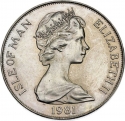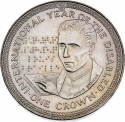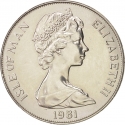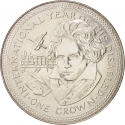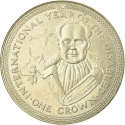You are about to finish your registration. Please check your mailbox (including spam folder). There should be a letter with a confirmation link. Check setting to make sure that your e-mail address is correct.
Send letter againDescription
A piedfort is an unusually thick coin, often exactly twice the normal weight and thickness of other coins of the same diameter and pattern. Piedforts are not normally circulated, and are only struck for presentation purposes by mint officials (such as patterns), or for collectors, dignitaries, and other VIPs.
In 1981, the UN declared the International Year of Disabled Persons (IYDP) to promote equal opportunities and disability prevention. The IYDP led to the World Programme of Action Concerning Disabled Persons and the International Decade of Disabled Persons (1983-1993). December 3 became the International Day of Persons with Disabilities in 1992.
South Yemen, officially the People's Democratic Republic of Yemen, also referred to as Democratic Yemen or Yemen (Aden) was a socialist country that existed from 1967 to 1990 as a state in the Middle East in the southern and eastern provinces of the present-day Republic of Yemen, including the island of Socotra.
South Yemen's origins can be traced to 1874 with the creation of the British Colony of Aden and the Aden Protectorate, which consisted of two-thirds of the present-day Yemen. However, Aden became a province within British India in 1937. After the collapse of Aden Protectorate, a state of emergency was declared in 1963, when the National Liberation Front (NLF) and the Front for the Liberation of Occupied South Yemen (FLOSY) rebelled against British rule.
Obverse
_Dinars_50/1981_09.05.2024_22.14-60.jpg)
|
Depicts symbol of I.Y.D.P in front of People's Democratic Republic of Yemen map surrounded by a wreath of olive encircled by country name in Arabic above, English below and dates in Gregorian. جمهورية اليمن الديمقراطية الشعبية |
|---|---|
Reverse
_Dinars_50/1981_09.05.2024_22.14_01-60.jpg)
|
Depicts the Coat of Arms of the People's Democratic Republic of Yemen (South Yemen) (1970-1990) encircled by the inscription above and denomination below. السنة الدولية للمعاقين |
| Edge |
50 Dinars
Piedfort
KM# P2 Schön# 16a
Related coins
International Year of Disabled Persons
_Dinars_50/1981_09.05.2024_22.14.jpg)
_Dinars_50/1981_09.05.2024_22.14_01.jpg)
